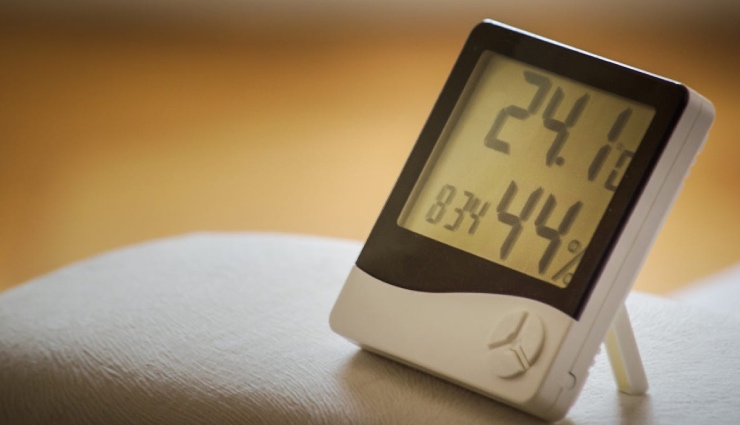We all spend much time at home and want the environment favourable. Most people care about the ideal home temperature, but have you ever thought about how much humidity should be in the house? As the summer season approaches, adjusting the humidity in the rooms becomes more critical. This article explains the concept of humidity and how we should regulate the house’s humidity. Stay with us.
What is humidity?
All humans feel the humidity of the air, and no matter the temperature and condition, they can almost understand how humid the air is. However, we must first understand this scientific concept to adjust the humidity. We will examine the difference between absolute and relative humidity in the following.
absolute humidity
Absolute humidity is the exact amount of water mass in the air. To calculate it, we must divide the mass of water in the air by the total air mass in the space we are considering. The unit of absolute humidity is grams per cubic meter. Of course, we usually don’t need absolute humidity to determine the air humidity in the house.
relative humidity
Relative humidity is the most critical measurement criterion for determining the amount of air humidity in the house. The scientific definition of relative humidity is the ratio of the partial pressure of water vapour to the pressure of water vapour at a specific temperature, expressed as a percentage. For example, when the air humidity is 40%, the air around you has 40% water vapour saturation. According to this concept, when the amount of air water vapour is constant, and we decrease the air temperature, the relative humidity increases.
The ideal level of air humidity in the house
Most people feel tired and uncomfortable in humid weather because the body’s temperature regulation system does not work correctly in high humidity. Our body produces sweat to regulate and maintain the ideal temperature. When we sweat, excess body moisture comes to the skin’s surface and is absorbed by the ambient air. If the air humidity is too high, sweat beads remain on the body, and the body does not cool down, making us feel uncomfortable and tired. To adjust the house’s humidity, you must also consider the absolute humidity and the temperature of the air outside the home. Usually, the air is more humid in summer and drier in winter.
Research shows that different people feel comfortable in the same humidity, so you should adjust the humidity level in your home according to your body and your family. Experts say the average air humidity is 40 to 60%, but keeping it below 50% is better to prevent mould growth.
Problems caused by low humidity
When the air humidity is low, it becomes difficult to breathe. In addition, dry air damages home appliances. Wooden appliances, furniture, doors, and window frames crack in these conditions. In dry weather, the body’s skin loses its water, itchiness and inflammation are more likely to occur, the skin of the lips cracks, and nosebleeds are more likely. Also, when the air is dry, our body becomes vulnerable to cold and infection, and infectious diseases may last longer.
Problems caused by high humidity
If the air in the house is too humid, water vapour penetrates the walls, floors, and ceiling. Moisture is trapped in these surfaces, which increases the possibility of mould. If the humidity is high for a long time, the paint or wallpaper may swell and peel. In addition, high humidity reduces the quality of sleep. People with asthma and allergies experience more severe symptoms in humid weather. Also, electronic devices may be damaged in damp weather.
Increasing air humidity
There are various methods to increase humidity. You can choose one of these methods according to your needs and the climatic conditions of your residence.
If the air in your home is always dry, you should use humidifiers or vaporizers. This device increases air humidity and suits bedrooms, living rooms and offices. In addition, you can regulate the house’s humidity by buying some houseplants. Plants produce moisture as they grow and release water vapour from their leaves. With this method, the humidity level of your home increases gradually. Experts say that heaters and fireplaces remove water vapour, but convection heating systems increase air humidity, so it is better to use a heating system to heat your home.
To increase the house’s humidity, you can dry your clothes indoors. The moisture of clothes, towels and bedding humidifies the air in the room. You can also leave the bathroom door open for a while so that the water vapour enters the air in the room. Some experts believe that water spray is also helpful in increasing air humidity. You can get a spray or a small mister and humidify the air in your room every few hours. Using this method, you should not spray water directly on sofas, beds, or wooden surfaces.
Decrease in air humidity.
If your city has humid weather, it is better to buy a dehumidifier. This device is a permanent solution to solve your problem. The function of the dehumidifier is to absorb excess water vapour in the air to balance the air humidity. Besides this method, you can replace water coolers with gas coolers to reduce humidity. Water coolers increase the environment’s humidity and are unsuitable for humid cities.
Try showering with cool water in hot seasons and not using a hot tub. Check your bathroom and toilet’s ventilation system and ensure the fans can ventilate the air thoroughly. Moisture-absorbing floor coverings are also a suitable option for controlling moisture.
last word
Air humidity is an essential factor in determining the human body’s comfort. Suppose the air is too humid or dry. In that case, the body’s temperature regulation system does not work correctly, and we feel tired. So, it is essential first to understand the concept of humidity and then provide conditions for an average amount of air humidity at home to prevent diseases and damage to household appliances.
If this article was helpful, share it with your friends and write us your opinion.



